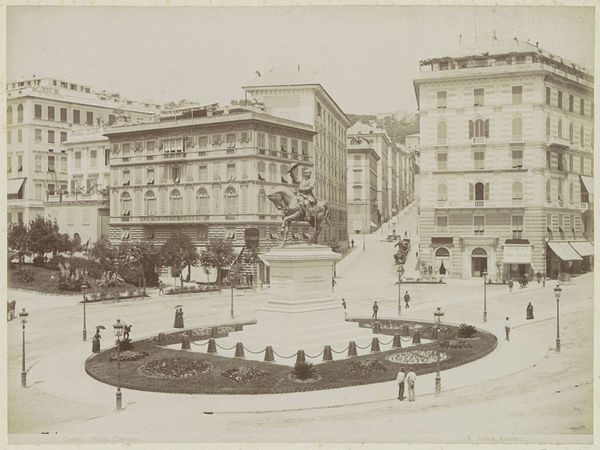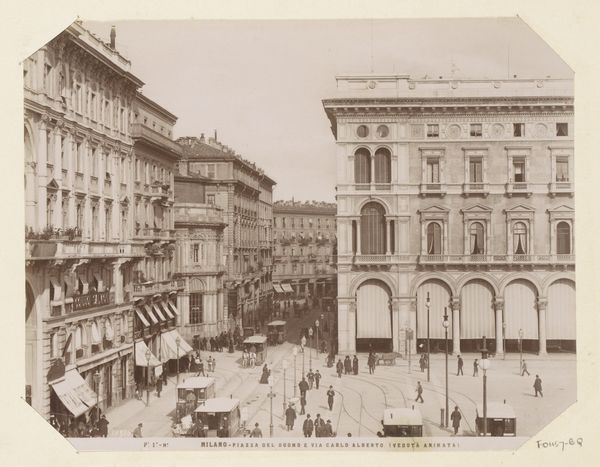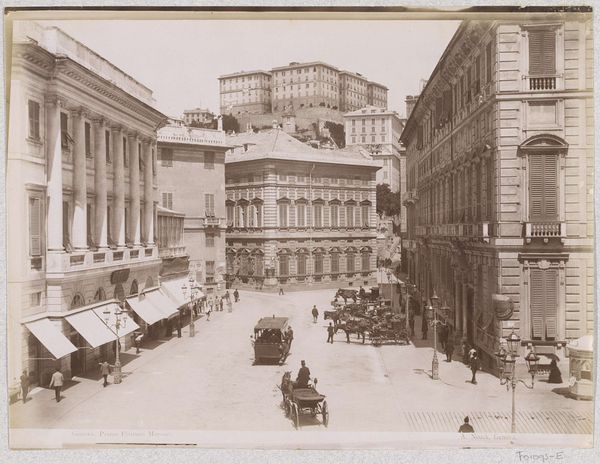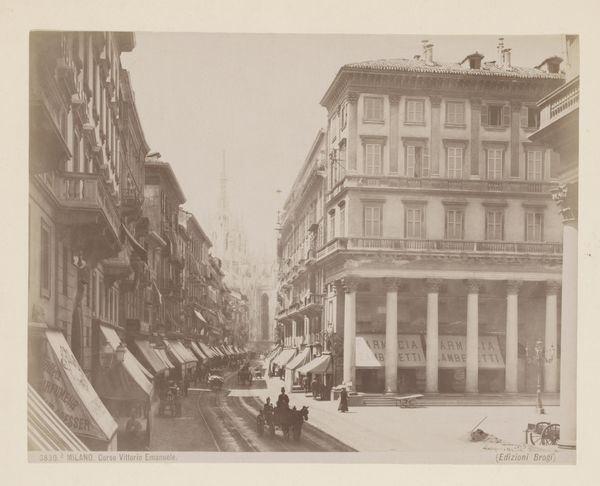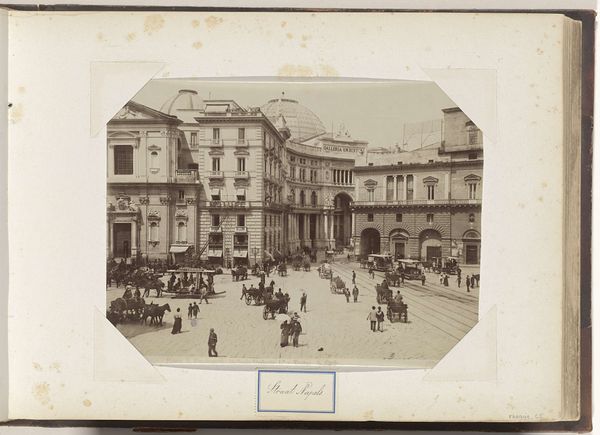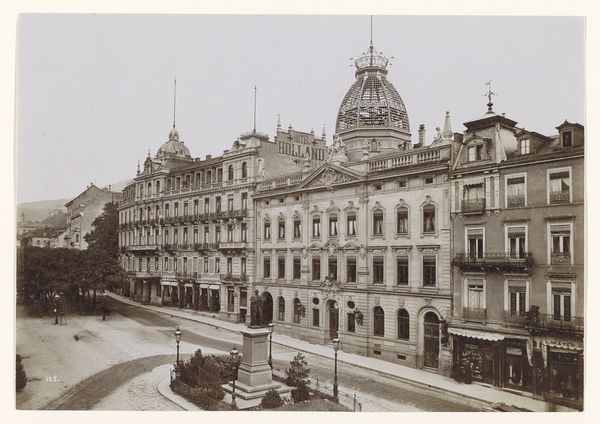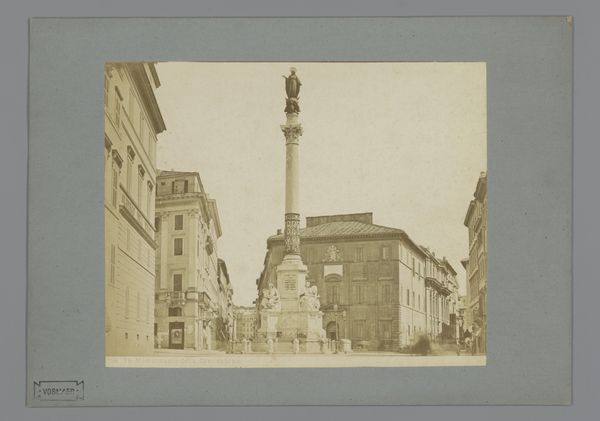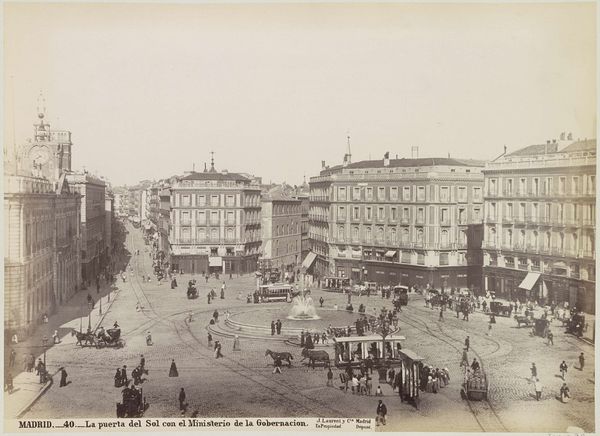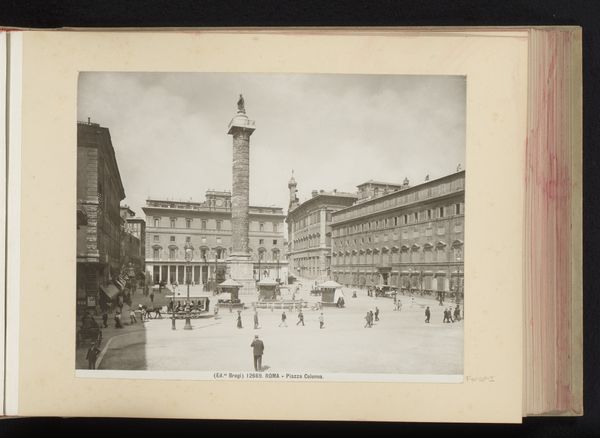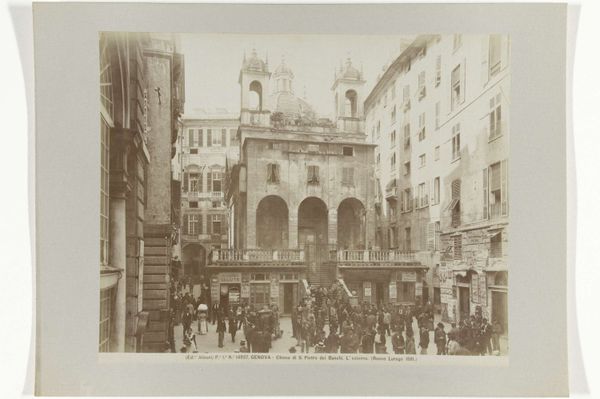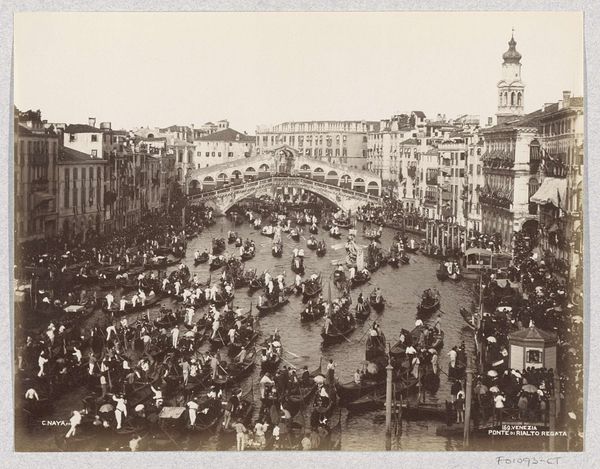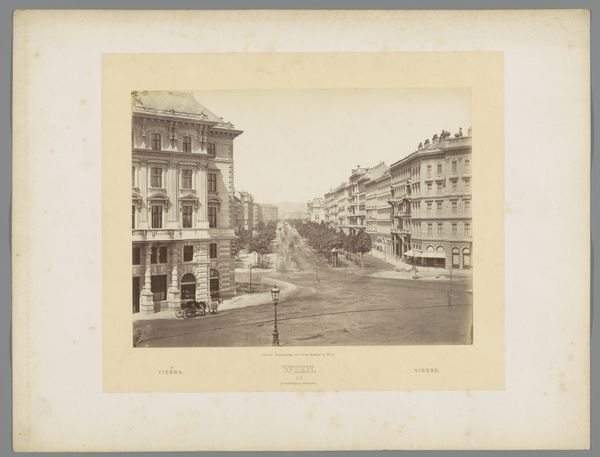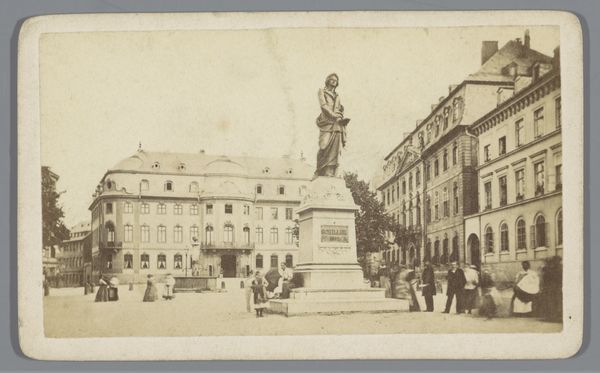
Piazza Corvetto in Genua met in het midden het standbeeld van koning Victor Emanuel II c. 1870 - 1890
0:00
0:00
photography
#
photography
#
cityscape
#
realism
Dimensions: height 202 mm, width 287 mm
Copyright: Rijks Museum: Open Domain
Curator: It's a rather formal, almost sterile scene, wouldn’t you agree? The light is flat, the square feels devoid of real life, despite the figures present. Editor: Alfredo Noack offers us this photographic print titled “Piazza Corvetto in Genua met in het midden het standbeeld van koning Victor Emanuel II,” which roughly translates as “Piazza Corvetto in Genoa with the statue of King Victor Emmanuel II in the middle," dating from the period between 1870 and 1890. It's certainly a composed scene. I'm curious about the implied power structures. We have a clear, almost topographic emphasis, highlighting spatial organization. Curator: Indeed. This square and, centrally, the figure of Victor Emmanuel II, function as a concentrated symbol of unification and the rise of the Savoy monarchy within a new liberal order. We must remember what the Risorgimento sought to displace and what patriarchal ideals it installed in the process. Look how they converge in this singular symbol: a heroic king mounted upon his noble steed. Editor: A very conventional and perhaps intentionally anodyne expression of state power, even banal. It feels so… deliberate. The statuary is the apex of civic order, isn't it? Like an assertion, meant to evoke stability and strength after the chaotic shifts in Italian politics. Curator: Precisely. How interesting that this frozen moment seeks to overwrite more messy historical realities with such stark architectural lines and controlled civic space. We must acknowledge the exclusionary narrative embedded within it—especially within the context of Italian unification, and who it truly served. Editor: But aren't symbols always selective? Aren’t they always attempts to crystalize particular virtues while obscuring others? Note, for instance, how the photographer plays with depth to convey civic monumentality; the statue and the buildings alike serve to magnify this. They all carry that implicit symbolic weight. It seems he seeks an absolute kind of authority and architectural monumentality through symbolic framing and careful image selection. Curator: Of course. Still, images of authority and control, like this square presented as utterly manageable, cannot simply be seen as neutral documentation. It presents power in an age when the cracks in traditional hierarchies were starting to show. Editor: You make me think. Ultimately, in observing images like these we should understand what narratives, intentions, and dreams are wrapped into this period, even though the era itself remains long past. Curator: Precisely; understanding this single frame deepens our understanding of our present, as an exercise in unpicking historical, social, and visual symbolism.
Comments
No comments
Be the first to comment and join the conversation on the ultimate creative platform.
